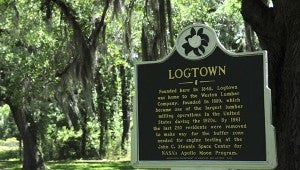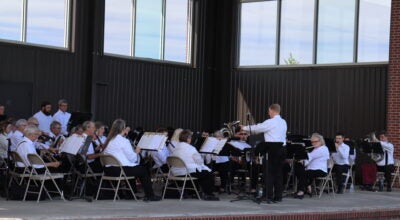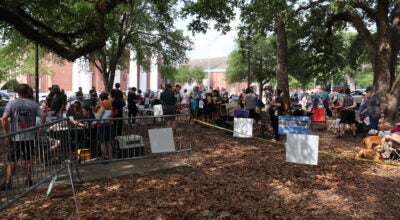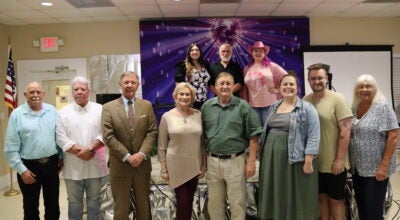The Possum Walk before the buffer zone
Published 7:00 am Friday, May 16, 2014

NO LONGER: Logtown and the village of Possum Walk no longer exsist, but the Stennis Space Center honors the former towns with markers along their nature tails at the Infinity Sciene Center in Hancock County.
Photo by Alexandra Hedrick
While the NASA buffer zone in Hancock County is no longer inhabited, the Stennis Space Center still tries to honor the communities and the families that once resided in the area. This includes nature walks and bike trails in the areas that were once known as Westonia, Logtown and Possum Walk.
The nature trail at the Infinity Space Center is actually called the Possum Walk, which was an African American village in the 18th century.
Former NASA Historian Dr. Marco Giardino said historians don’t know much about the origins of the village, but suspect it was a location where slaves lived in the pre-Civil War era.
During the Reconstruction era, after the Civil War, many people who were slaves became independent businessmen in the timber and turpentine industry, Giardino said.
He said most of African Americans, regardless of their business success, still had to rent homes and land from companies they worked for.
There were many prominent African Americans who over the years came to Hancock County and improved the way of life for the community.
One prominent person was Usan Vaughn, who was a former slave turned blacksmith from Pearlington. Vaughn invented the carry log, a high-wheeled vehicle that allowed easier access to timber in the marshlands, Giardino said.
He said the Vaughn family continues to be one of the most famous families in Hancock County.
Another African American named Taylor Fryerson formed the first Baptist Church in Gainesville.
Fryerson formed the Improvement of Colored People Society in Gainesville in 1870 and also founded a school for the children in the community in 1872, Giardino said.
The area saw futher improvement when Bishop Robert E. Jones came to the area in the 1920s.
Jones bought land along the beach called Gulfside Assembly. Giardino said it provided education and recreational opportunities for the African American community in the 20s.
It was also the only place where African Americans had access to the beach, Giardino said.
He said, Jones also started a school for underprivileged African American boys in 1929.
Much of the land that was owned by African Americans in the 1800s and early 1900s was granted to them by members of the Koch family.
Christian Koch was a prominent businessman in the 1860s in Hancock County who was strongly opposed to slavery, Giardino said. After the war, he granted parts of his land to African Americans, something that was carried on by his son, Emil.
Emil Koch donated land to a African American social organization, a school for African Americans and the Bogua Houma church in the late 1800s and early 1900s, Giardino said.
In 1895, the Koch family also donated about 10 acres of land to several African American families, including the Christmas family, Giardino said.
Giardino said many of the descendants of these families continue to show up for his presentations on the history of the buffer zone because, for many, they are looking for any tiny piece of information about their ancestral past





